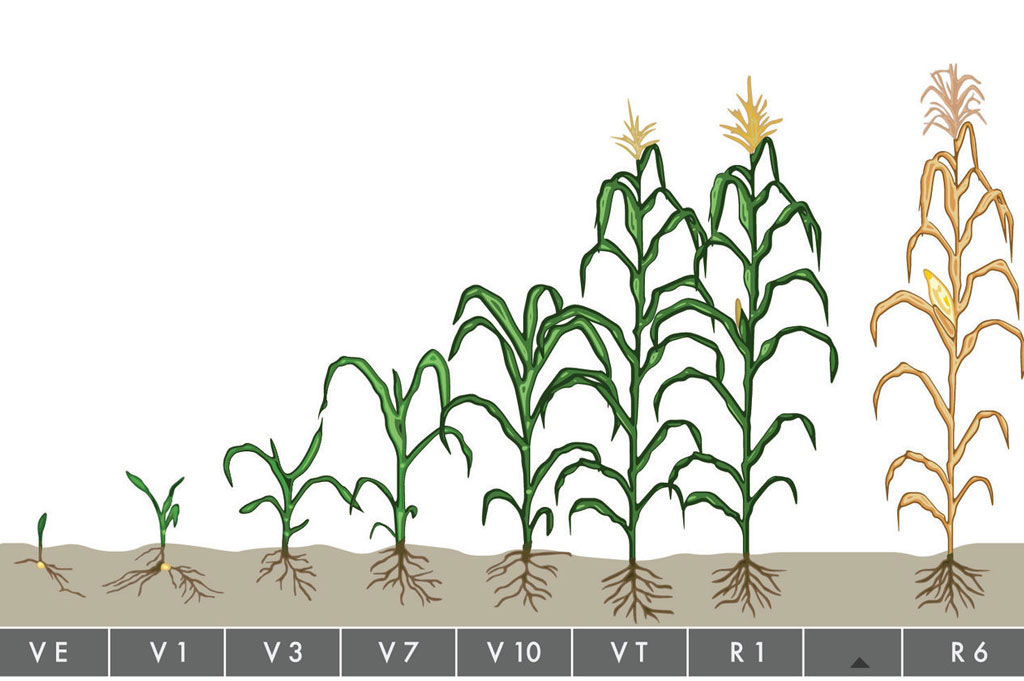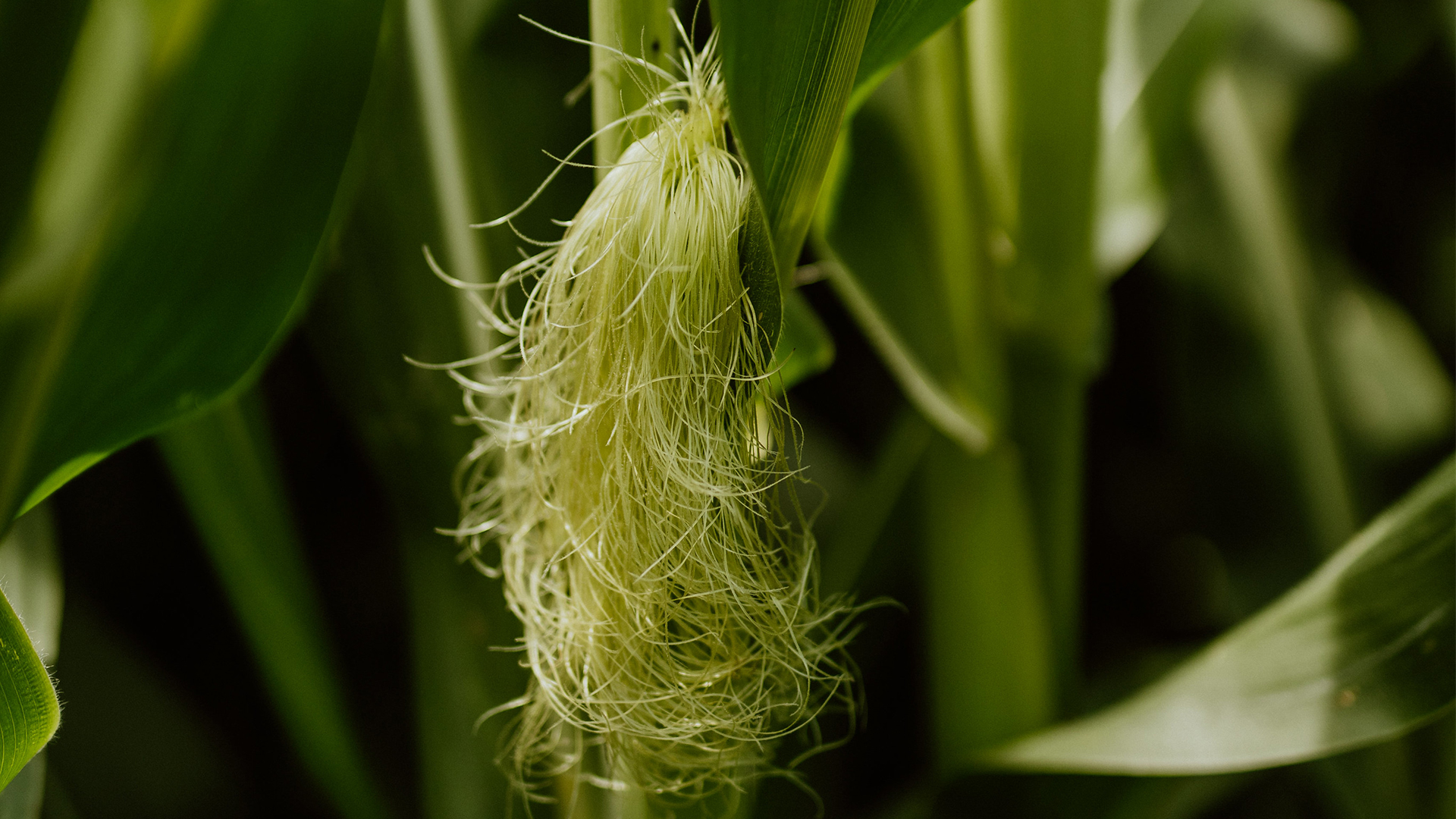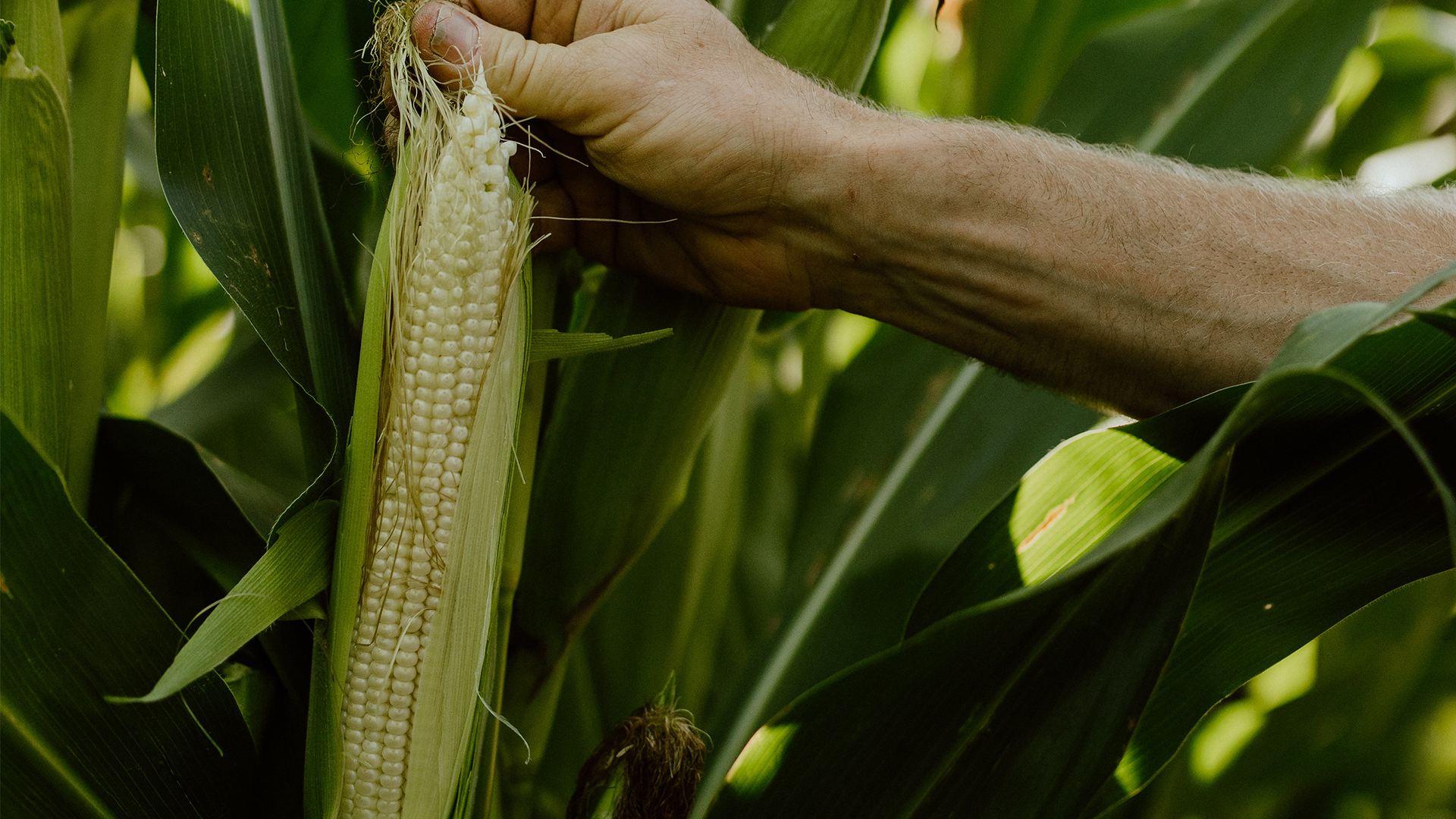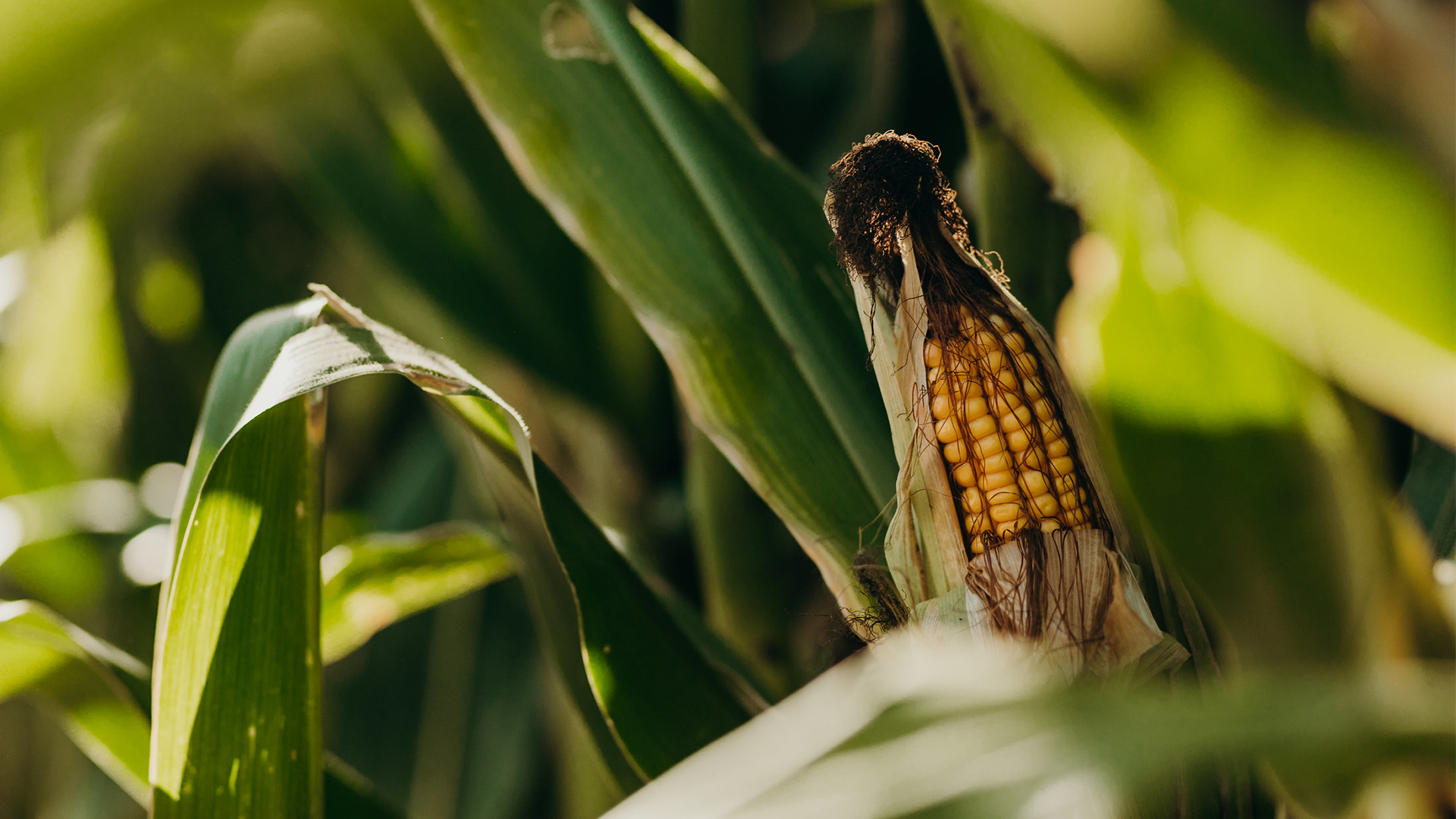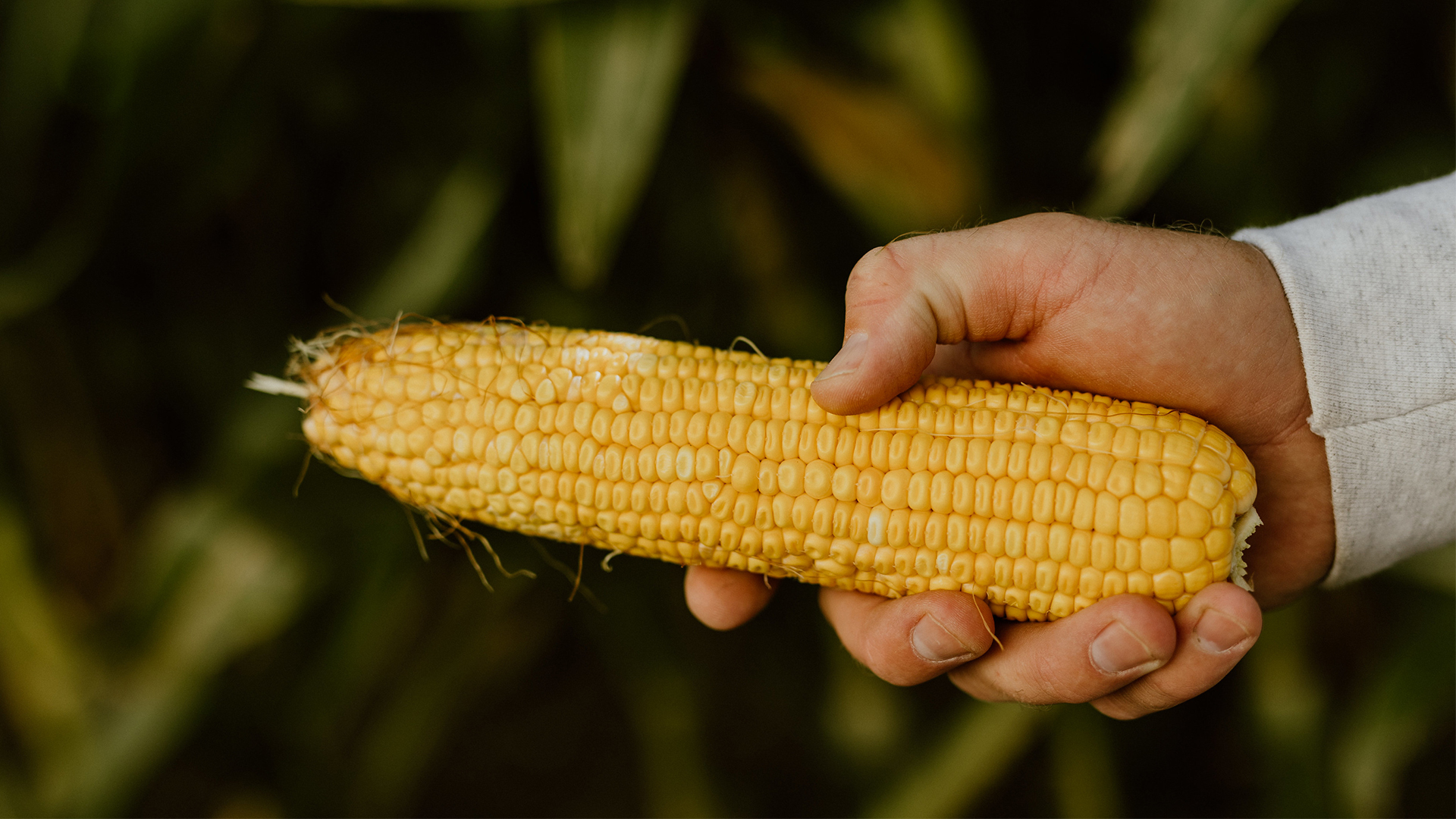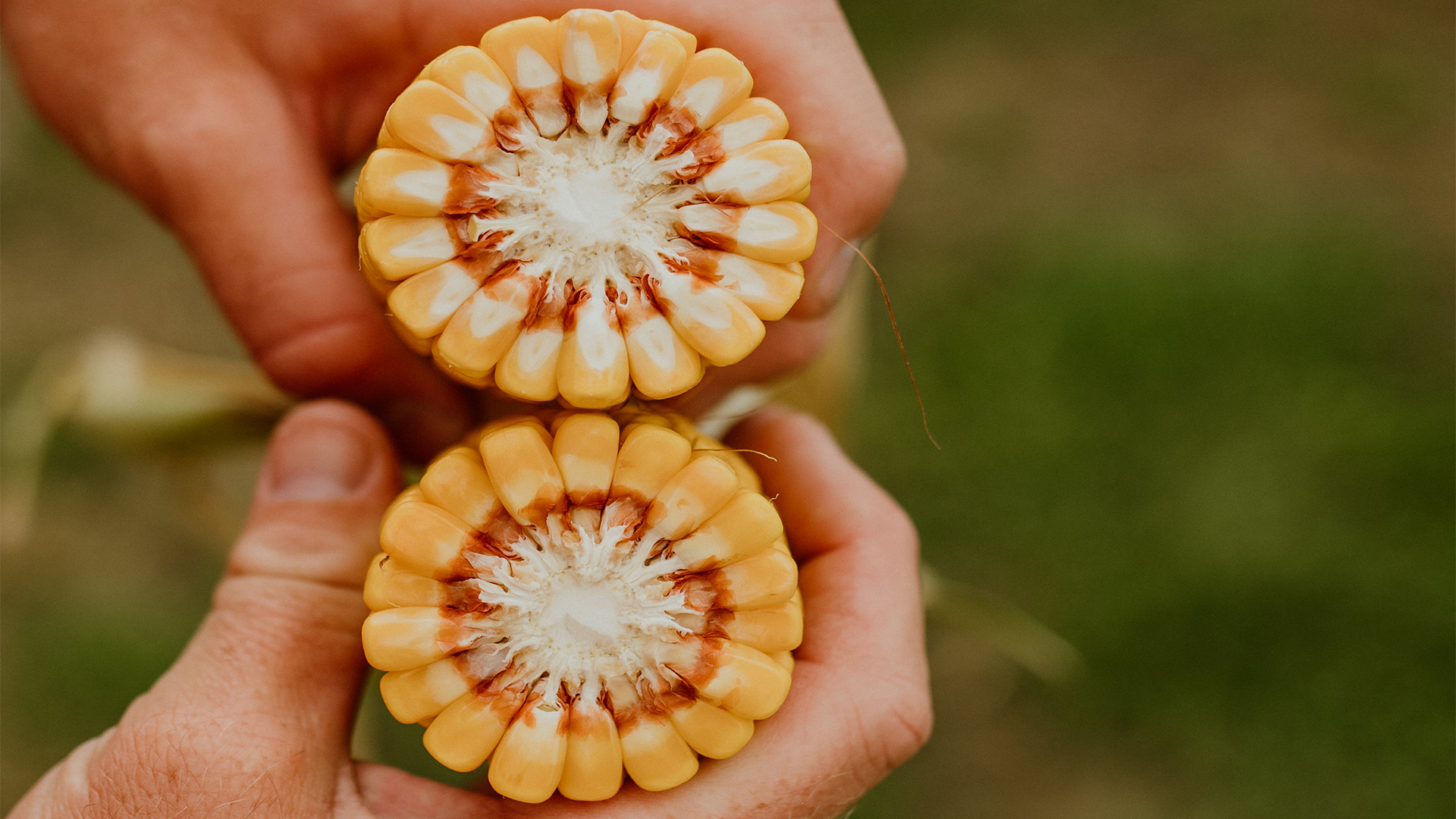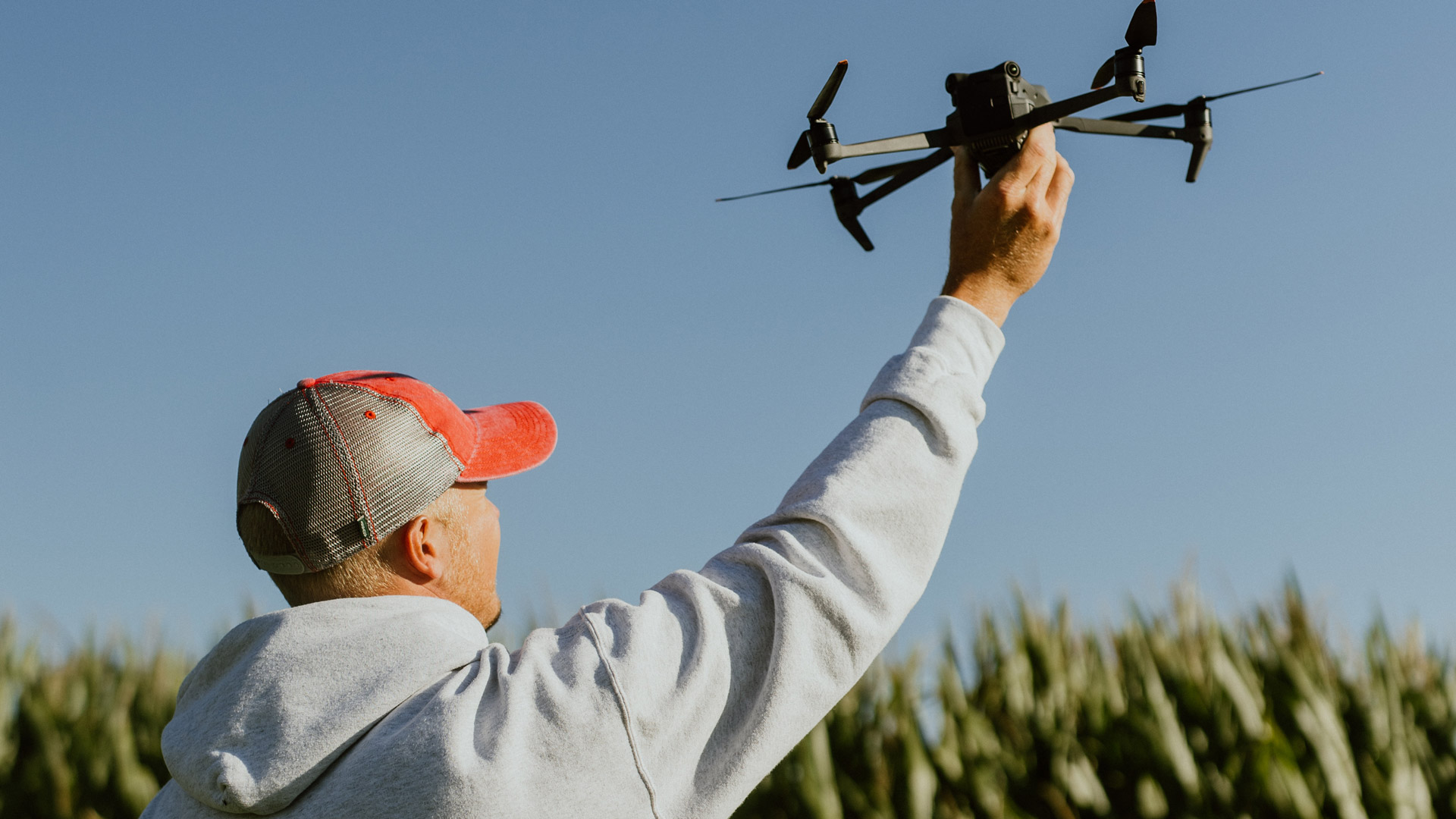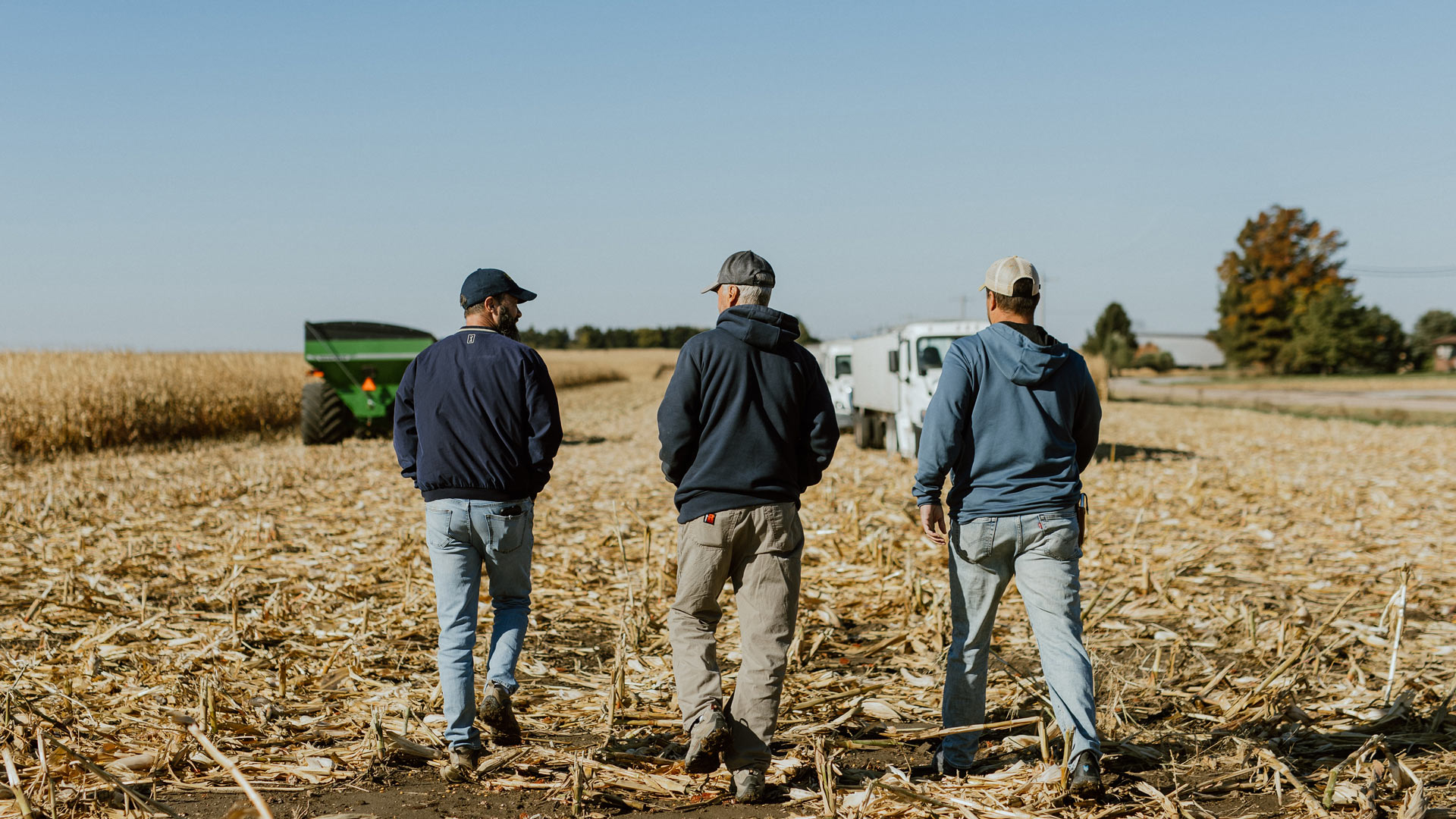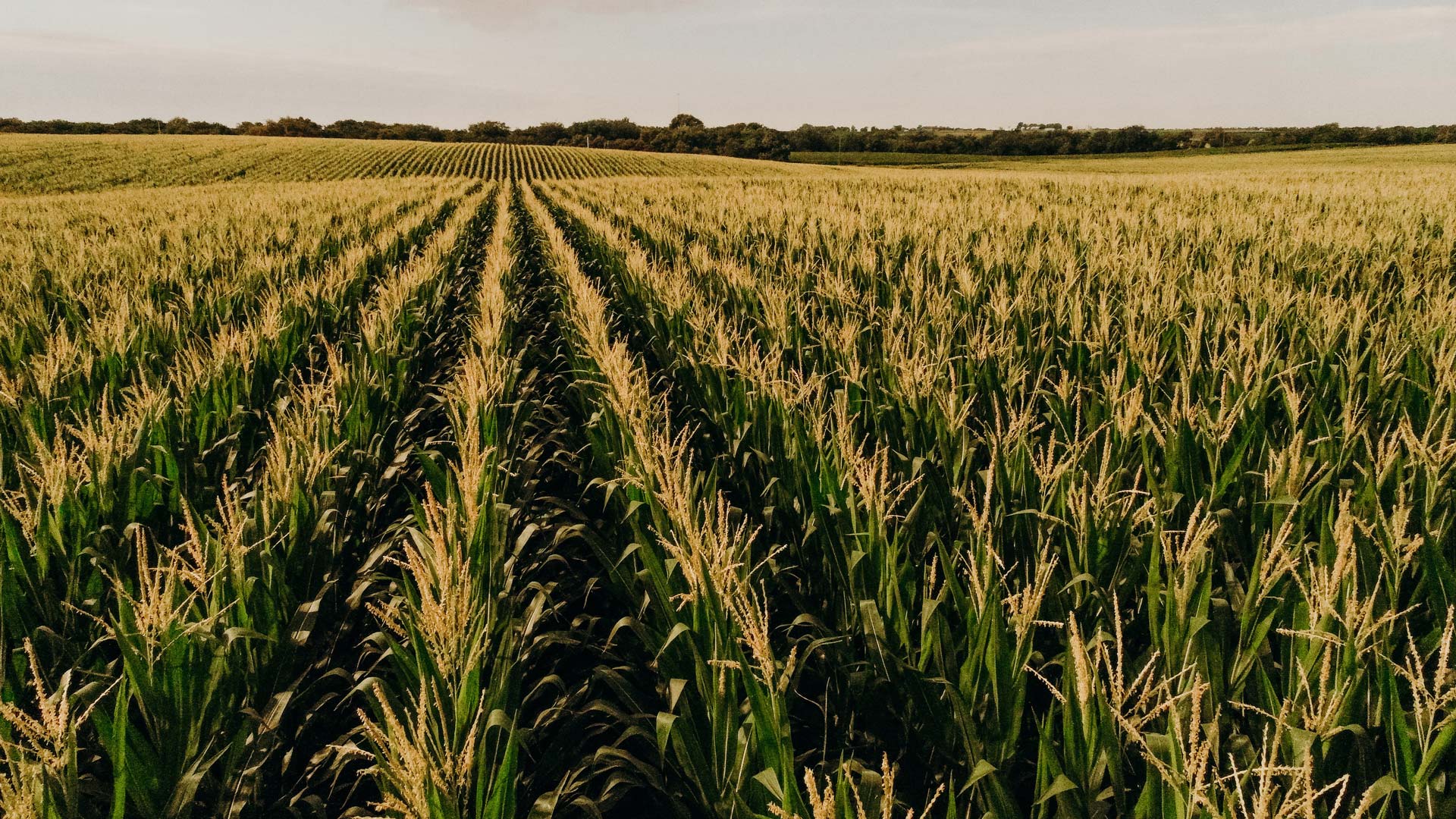Growing corn requires hard work and careful attention to the needs of the plants — and a solid understanding of the corn stages of growth. These stages provide valuable insight into how the plant is progressing and what it needs to thrive. From early leaf development to kernel formation, each stage is an important step in the corn life cycle
The corn plant growth stages fall under two phases: the vegetative and reproductive phases. During the vegetative phase, the corn plant undergoes leaf, stem and root development. Then, during the reproductive stages, the plant focuses its energy on pollination and kernel formation.
Key Vegetative Stages of Corn Growth After Germination
After germination, corn enters a series of stages that are key to supporting overall corn growth and development. These vegetative stages are identified by the number of visible leaf collars — distinct, light-colored bands where the leaf blade meets the cornstalk.
The names of the vegetative stages follow the formula VN, or VNth stage: V indicates vegetative stage and N refers to the number of leaf collars. The number of leaf collars on a plant depends on the variety of corn, but most modern varieties have 18 to 21 leaves. Monitoring these collars helps track the plant’s progress through early growth.
- VE: Corn seedling emerges from the ground, but does not have a leaf collar. This typically occurs four days to two weeks after planting corn, depending on conditions.
- V1 to V5: The first small leaf collar appears at V1. A second leaf collar appears at V2, when the corn seedling is 2 to 4 inches tall. Two to four weeks later at V3, the plant sprouts a third leaf collar and begins to use photosynthesis to grow instead of relying on its seed. By V5, the plant has five leaf collars and is 8 to 12 inches tall.
- V6-V9: Corn continues to add leaf collars at V6 through V8, at which time it is about 2 feet tall. The tassel at the top of the plant, which contains the pollen, is developing rapidly at V9.
- V9+: The corn plant continues to add leaf collars as it grows. It continues to develop the tassel as it nears the reproductive stage.
- VT: Corn begins tasseling and releasing pollen. This signifies the end of the vegetative stage.
Key Reproductive Stages of Corn Growth
In the reproductive phase of corn growth and development, the plant shifts its energy from producing leaves and roots to the reproductive parts of the corn plant, like the silk and kernels. These corn plant stages are essential for determining harvest quality and quantity, as successful pollination and grain fill as harvest approaches.
Tracking these stages helps farmers know when to harvest corn. Stages of growth for corn’s reproductive phase are noted by progress of pollination and the development of the corn kernels.
How Long Does Corn Take to Grow?
Plant geneticists have developed many varieties of corn to fit growing conditions for corn farming around the world, so some corn varieties take longer to mature than others. Broadly speaking, most corn varieties need 80 to 115 days to grow under normal conditions. Corn in areas with warm weather and adequate moisture will grow the best, while plants in areas with unusually cold or dry conditions will not grow as quickly.

